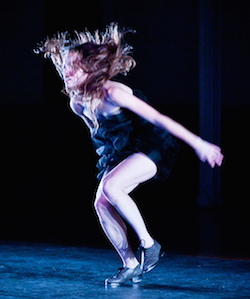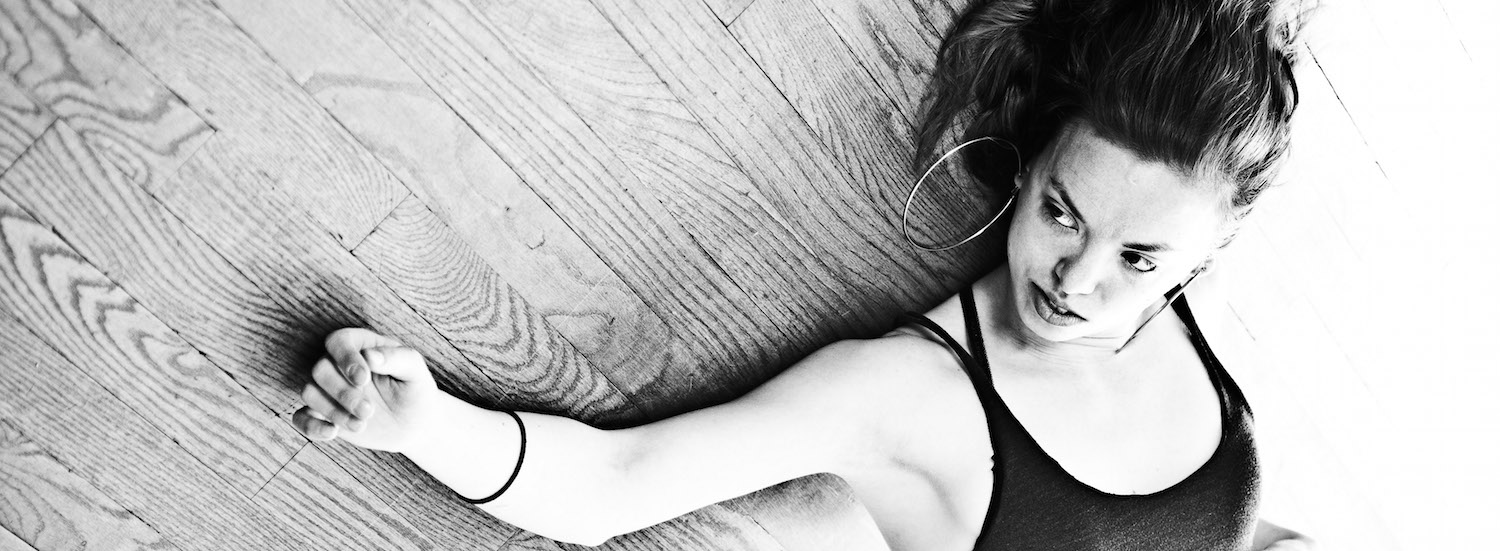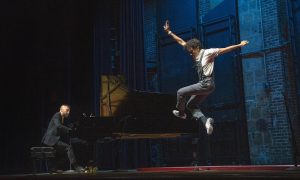In late September, it was announced that tap dancer and choreographer Michelle Dorrance was one of the recipients of the “genius grant”. This honor, more formally known as the MacArthur Fellows Program, was bestowed upon 24 people, of all different fields, who all demonstrate creative potential.
Dorrance was recognized for her innovative style of melding the traditional tap dance form with the choreographic intricacies and storytelling aspect of contemporary dance. Dorrance and each of the recipients are given $625,000 over five years to spend however he/she chooses!
We had the honor of speaking with Dorrance, who is also a Capezio Athlete and just a wonderful ambassador for the tap community in general. She greets this tremendous award with such humility, and we look forward to seeing where she will go next!
I got the chills when I read that you received a phone call about this grant out of the blue. How did you feel when you got that call? Was it a complete surprise?
“I was absolutely shocked when I received this call – completely overwhelmed and, at first, terrified, but then simply very humbled and of course so incredibly grateful. MacArthur Fellowships cannot be applied for. The foundation has their own process of selecting Fellows. They ask a number of anonymous professionals in hundreds of different fields to write recommendations. While on the call with them, they asked me if I knew they’d ‘been watching me’ for the past several years. I had no idea.”
Why do you think you were a good candidate for the MacArthur ‘Genius Grant’?
“I’m going to opt out of answering most of what you’re asking because I don’t think I’ve done enough or made enough of an impact to have received this honor. What I can say is that I believe tap dance and the many people responsible for pushing and innovating this form every day deserve this recognition. I can accept it on behalf of the work we are doing as a community to change our culture. That is powerful.”

MacArthur Genius Grant recipient Michelle Dorrance. Photo by Ian Douglas.
The winnings are $625,000 over five years. What will you do with that money?
“This isn’t a very glamorous answer, but starting a dance company, touring, buying microphones, buying costumes, buying a seamless, sprung, hardwood floor to tour with, paying dancers, paying musicians and commissioning music all costs tons of money, and I have accrued more debt than I’d care to admit. The first year will be committed entirely to paying off the credit cards that helped build the company and the rest goes to taxes! AH! No one teaches you this stuff when you’re a kid. Not fun. For the following four years, I’m really excited to see what I can do to fund a tap company and tap dancers in a way that has never before been done. Paying dancers and musicians is always my first priority, and I can now finally start paying myself.”
You seem to be such a great ambassador for tap dance. Why is that important to you? What is it about the art form that you love sharing with others?
“Tap dance is the first American-born dance form. It is the original ‘street’, or ‘urban’, dance. It was started and innovated by the most oppressed population in our culture and is transcendental. African and Irish cultures collaborated and blended before this was even accepted socio-politically. I always like to say it was the first true manifestation of what democracy could be in this country. It is dance and music at the same time! It is one of the most sophisticated and powerful art forms on the planet and is simultaneously one of the most universal and one of the most joyful.”
What’s your favorite Capezio product?
“To this day, the K360 is the shoe that sounds and looks the most like ‘me’. There’s nothing else like it. I’m currently wearing two different K360 wingtips from two different pairs of shoes. One is five years old, with a double half sole build that is about to completely fall apart, and the other is two years old with a single sole and needs some attention as well. But it’s just incredibly hard to let go of a shoe that starts fitting your foot like a glove! I have every single pair of my old tap shoes, and tons of my old cracked taps.”
What advice do you have for other aspiring tap dancers out there?
“Learn your history. Everyone alive on this planet who calls themselves a tap dancer should also be able to call themselves a tap historian. We stand on the backs of so many dancers who survived slavery, institutionalized racism and more, to create and innovate the form, only to barely be recognized. We are where we are now because of them, and we are nothing without them. With the terrifying shootings that are present in our culture right now, it is ever more crucial to be educated about the hard truths and history in this country and culture, and it is inspiring to be a part of an art form that finds its way through that history of hardship to express so much joy.”
By Laura Di Orio of Dance Informa.
Photo (top): Michelle Dorrance. Photo by Matthew Murphy.















